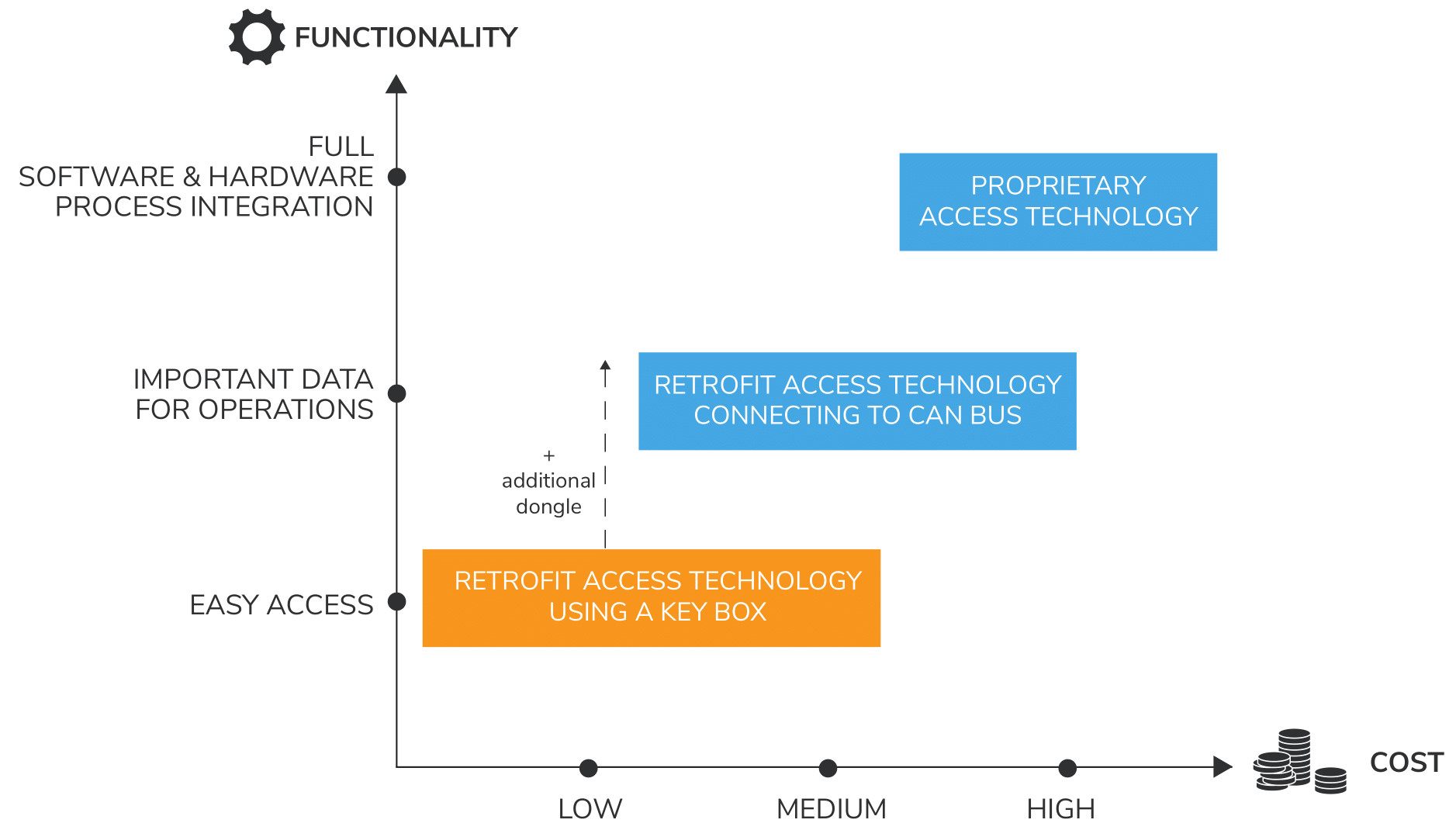What is OEM Retrofits in Automotive? Exploring Modern Car Upgrades

The automotive industry is rapidly evolving, with connected cars leading the charge in innovation. The ability to transfer data seamlessly opens up exciting possibilities for new services and features in vehicles. While Original Equipment Manufacturers (OEMs) are at the forefront, developing sophisticated and integrated technologies, a parallel market for retrofit solutions is emerging. These solutions offer a way to modernize existing vehicles, particularly in areas like vehicle access. Car access retrofit essentially means upgrading and enhancing the access systems of cars already on the road. Let’s delve into the concept of OEM retrofits and explore different approaches to car access solutions.
Understanding OEM (Original Equipment Manufacturer) and Retrofits
To grasp “OEM retrofits,” it’s crucial to understand the individual components of this term. An Original Equipment Manufacturer (OEM) refers to a company that produces parts or subsystems that are used in another company’s end product. In the automotive context, OEMs are the vehicle manufacturers themselves, like Ford, BMW, or Toyota. They design and manufacture vehicles, including all their integrated systems.
A retrofit, on the other hand, is the process of adding new technology or features to older systems or products after they have been manufactured. In the automotive world, retrofitting involves adding aftermarket components or systems to a vehicle that were not originally installed by the OEM during production. This could range from installing a new sound system to adding advanced driver-assistance systems (ADAS).
Therefore, OEM retrofits, in the context of our discussion, refers to retrofit solutions that are either developed or endorsed by the original vehicle manufacturer or are designed to integrate seamlessly with existing OEM systems. While the term might seem contradictory at first glance, it encompasses upgrades and modernizations that align with OEM standards or expand upon OEM functionalities in the aftermarket.
Types of OEM Retrofit Access Solutions
When it comes to car access, both OEMs and aftermarket companies offer various retrofit solutions. Let’s examine three key categories:
OEM Proprietary Access Technology
OEMs often develop proprietary access technology as part of their connected car strategy. Proprietary technology, by definition, is owned and controlled by a specific company. Think of Apple’s ecosystem – hardware and software are tightly integrated, and access is controlled within their proprietary system.
In cars, OEM proprietary access systems involve hardware and software installed directly into the vehicle, with all processes deeply integrated. Major car manufacturers are innovating in car sharing and vehicle management using these systems. While offering advanced functionalities like GPS tracking, fuel consumption monitoring, and real-time vehicle diagnostics, these proprietary solutions can be complex and expensive. OEM sharing services like ShareNow, operated by BMW Group and Daimler, exemplify this approach.
CAN Bus Retrofit Solutions (OEM Compatible)
Many digital key management systems for cars rely on integration with the CAN (Controller Area Network) bus. The CAN bus, developed by Bosch, is a communication network standard in vehicles, connecting all electronic control units (ECUs). ECUs can include engine control, airbags, and access control systems.
Retrofit solutions that connect to the CAN bus can access real-time vehicle data and execute commands. This allows functionalities like checking if the car is locked or unlocked remotely. OBD (On-Board Diagnostics) dongles and control devices exemplify this approach. Telematics companies use these for GPS tracking and fleet management. Open access technologies like Tapkey can expand the functionality of CAN bus-connected hardware, adding smartphone-based access and other features. This approach offers a less OEM-centric connectivity ecosystem.
Key Box Retrofit Solutions (OEM Independent)
For a more straightforward and less invasive retrofit approach, key box solutions offer an alternative. Companies like WITTE Digital provide key boxes that utilize access technology (like Tapkey’s API and Mobile SDK). In this system, the physical car key is stored securely within a box inside the vehicle.
The unlock mechanism is triggered remotely, granting keyless access without direct integration into the car’s electronic systems. This solution is non-invasive, quick to install (under three minutes), and doesn’t require specialized mechanics. While functionality might be more limited compared to deeply integrated proprietary systems, key boxes offer ease of use, flexibility, and cost-effectiveness. Telematics data can still be collected with an additional dongle if needed.
 Graphic OEM vs. Retrofit Car Access Solutions
Graphic OEM vs. Retrofit Car Access Solutions
Alt text: OEM vs Retrofit Car Access Solutions Comparison: Proprietary systems with deep integration versus flexible retrofit options like CAN bus and key box solutions.
Advantages and Disadvantages of OEM Retrofits
Both OEM proprietary access technology and retrofit solutions have distinct advantages and disadvantages. OEM solutions often provide deeper integration and potentially richer data sets due to their comprehensive system design. However, they can be more expensive and less flexible, often locking users into a specific OEM ecosystem.
Retrofit solutions, particularly CAN bus and key box options, offer greater flexibility and cost-effectiveness. They allow for upgrades to existing vehicles without requiring extensive modifications or proprietary systems. The choice between OEM-driven proprietary systems and more open retrofit solutions depends on specific needs, budget, and desired level of integration and functionality.
In Conclusion
Understanding “OEM retrofits” involves recognizing the spectrum of aftermarket solutions for vehicle upgrades, particularly in the rapidly evolving area of car access. From deeply integrated OEM proprietary systems to more flexible and accessible retrofit technologies like CAN bus integration and key boxes, the automotive aftermarket provides diverse pathways to modernize vehicle functionality. The optimal approach depends on a careful evaluation of specific requirements and priorities.



